Optimise workspace productivity using the five senses as a guide. What do I mean by this? Our senses drive our motivation, focus and attitudes during every living moment. We need to appease these senses as much as we can to remain comfortable. Discomfort negatively affects our productivity. In the workspace, we may find obstacles or challenges that derail productivity and our goal is to eliminate them. But how can we use our senses as a guide? Use your sense of sight and observe the image below!
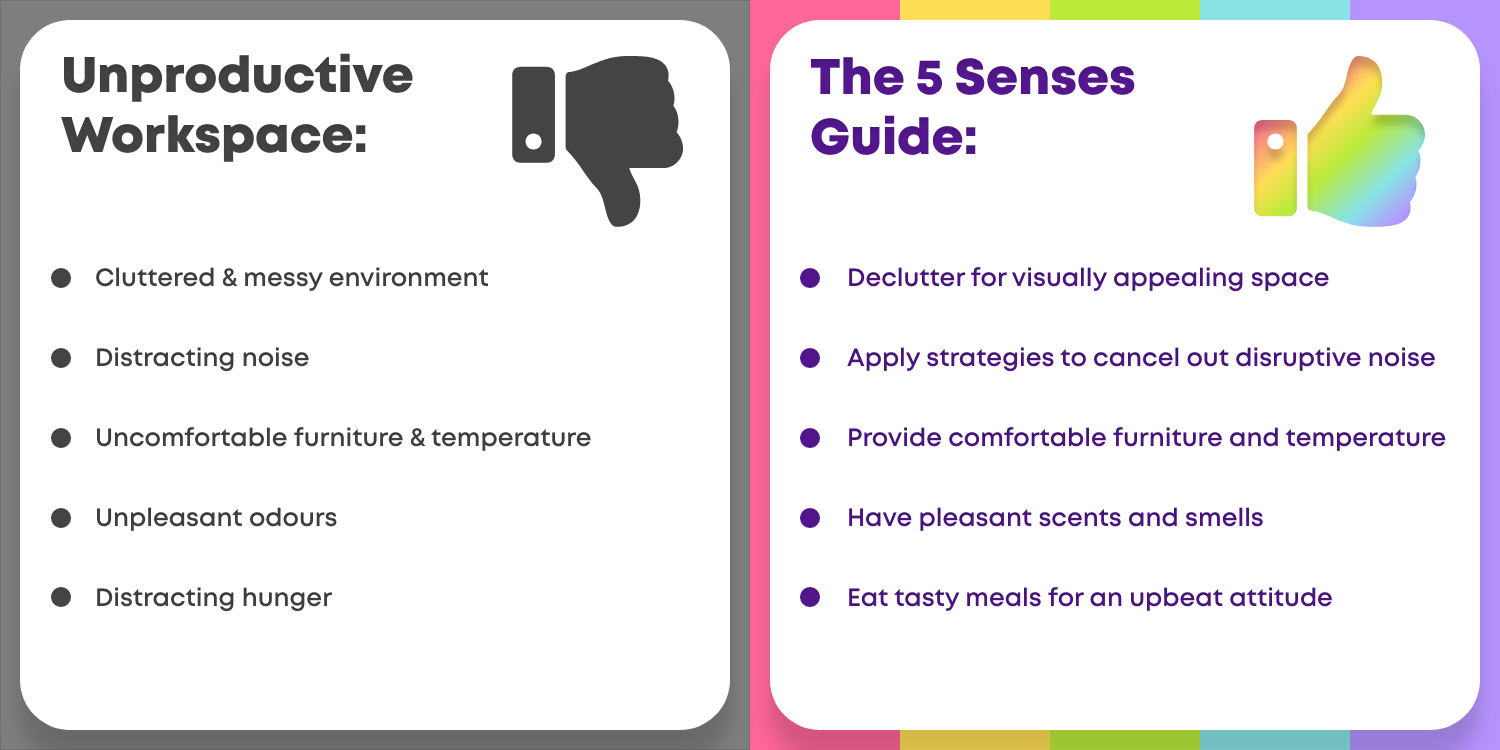
Sight: all I see is clutter
What we see can disrupt us and decrease productivity. Our parents were right all along; we need to clean our rooms. According to studies focused on productivity in the workplace, the most dominant factor that deters an employee’s ability to focus is their physical environment.
Let’s think about it- if you were to walk into an office with papers scattered across the floor, a cluttered desk and unwashed dishes in the kitchen, would you be able to fully function? Or would you find clutter distracting? Are you a person that benefits from a more organised environment? If so, you’re not the only one. I physically cannot think straight when a mess surrounds me.
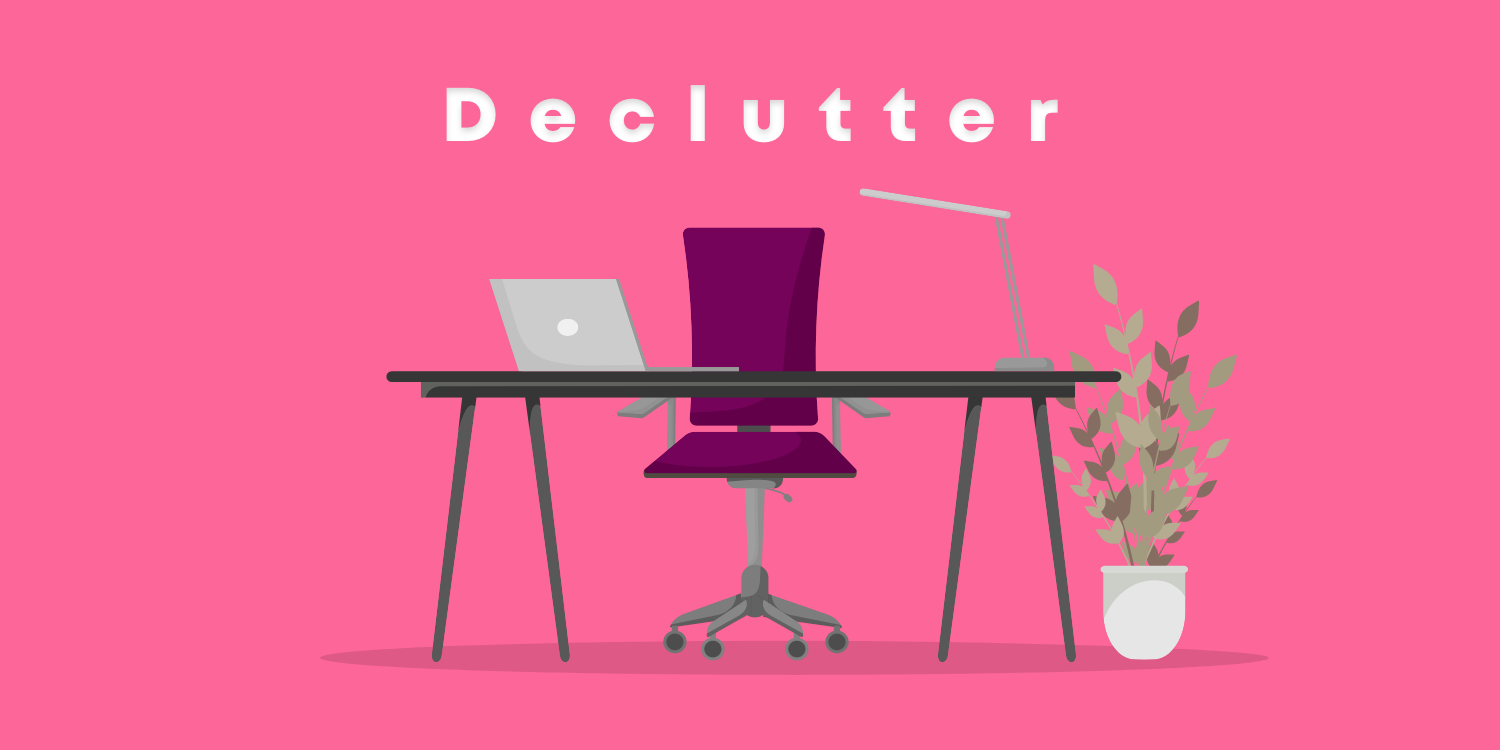
A well-executed, tidy workspace can make all the difference between a focused employee and a distracted employee. Speaking from experience, I worked in a popular cafe, and we hustled non-stop for hours due to the rush of customers. Because we were so busy, the floor space soon became cluttered with empty milk cartons and squashed muffin bits. All it did was add to an already stressful situation as the messy floor became an OH&S issue whilst making dozens of coffees.
Lighting is another visual factor that can flip a person’s attention span. Have you ever found yourself straining your eyes against uncomfortable lighting? Whether that be from the ceiling lights or your computer screen? This then leads to that nagging headache that only goes away when you close your eyes. I’ve also found that working in a dark space makes me feel unmotivated and even a little bit depressed. Balanced lighting is a must!
Sound: shhh… it’s too noisy
I think we can all agree that sound can be an extremely distracting factor when trying to focus your attention. Sound can also be a focusing element. Music or meditation produces a sound that can calm the senses and redirect your focus. So how can we incorporate and eliminate sound for an optimised work environment?
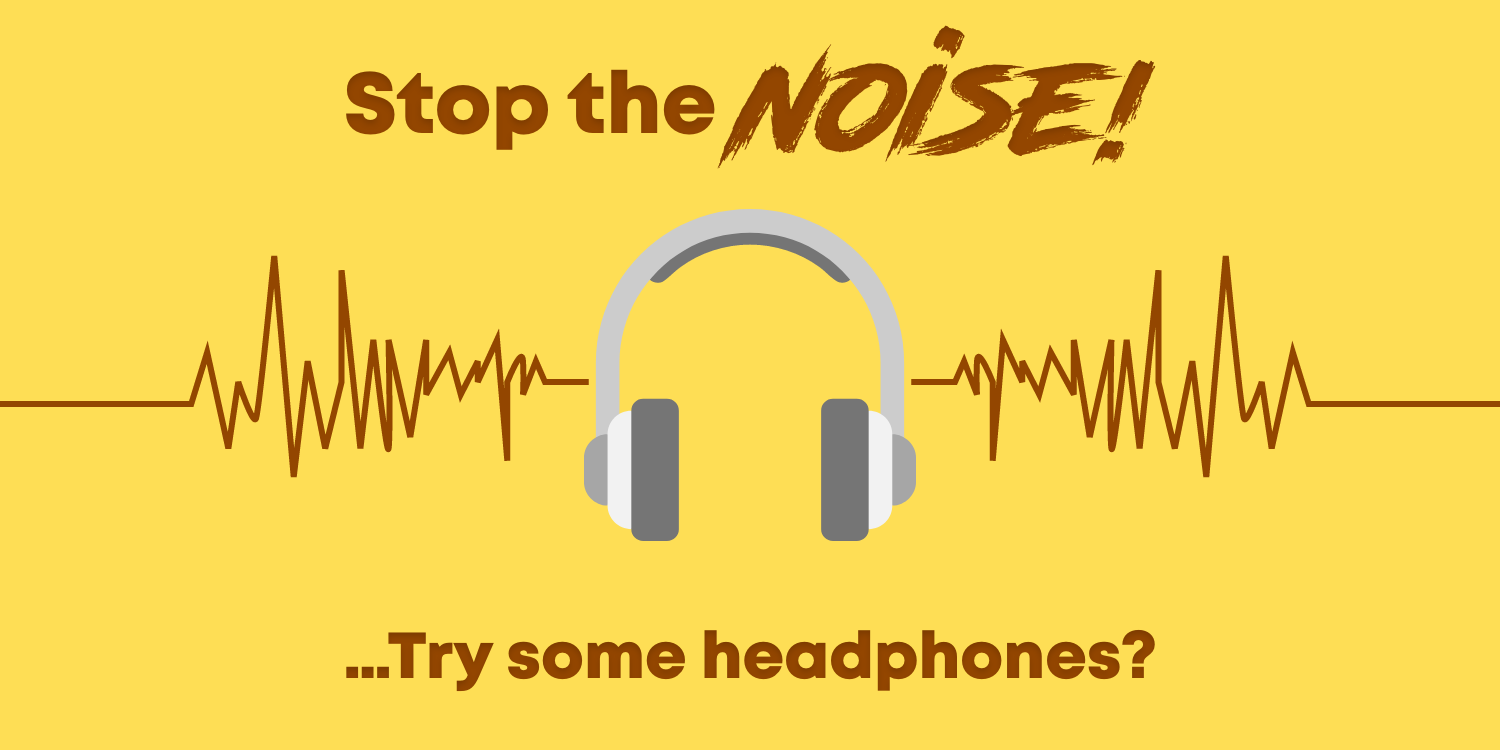
An idea that we have implemented here at Myrecruitment+ is open-plan offices. I researched this a bit further and found an interesting quote, “Open-plan offices are said to stimulate communication and collaboration, encourage flexible working between teams, and also improve workplace design and efficiency.” This means that any form of sound should be collaborative noise.
Many argue that open-plan offices are “counterproductive”, whilst others believe that collaboration connects the staff and achieves company goals faster. So what does this have to do with sound? Well, there is productive noise and counterproductive noise. Productive noise is generally chatter amongst team members about workplace goals. Counterproductive noise refers to external sounds that are distracting or internal chatter irrelevant to the workplace. An open-plan office can invite both of these outcomes, however, there are ways to minimise the counterproductive noise.
I love earphones or headphones. You can listen to music or relaxing meditation whilst doing work without it affecting others. It grounds me to the task at hand as I can block out any white noise. Break rooms or single office spaces is another solution. If you or an employee are in need of some quiet or privacy, those rooms are available. Perhaps these suggestions could work for your work environment?
Touch: my chair is uncomfortable, and the office is too cold
I’ve touched on how the visuals of a workspace is essential, but how it feels is another story. The worst thing is to be physically uncomfortable. Uncomfortable chairs, ill-fitting clothes, freezing or sweltering temperatures can contribute to a dysfunctional workspace. To optimise workplace productivity, perhaps reevaluating the dress code could be effective. I’ve recently written a blog on this topic if you’d like to check it out. It has also been reported that a room’s temperature can benefit a person’s productivity.
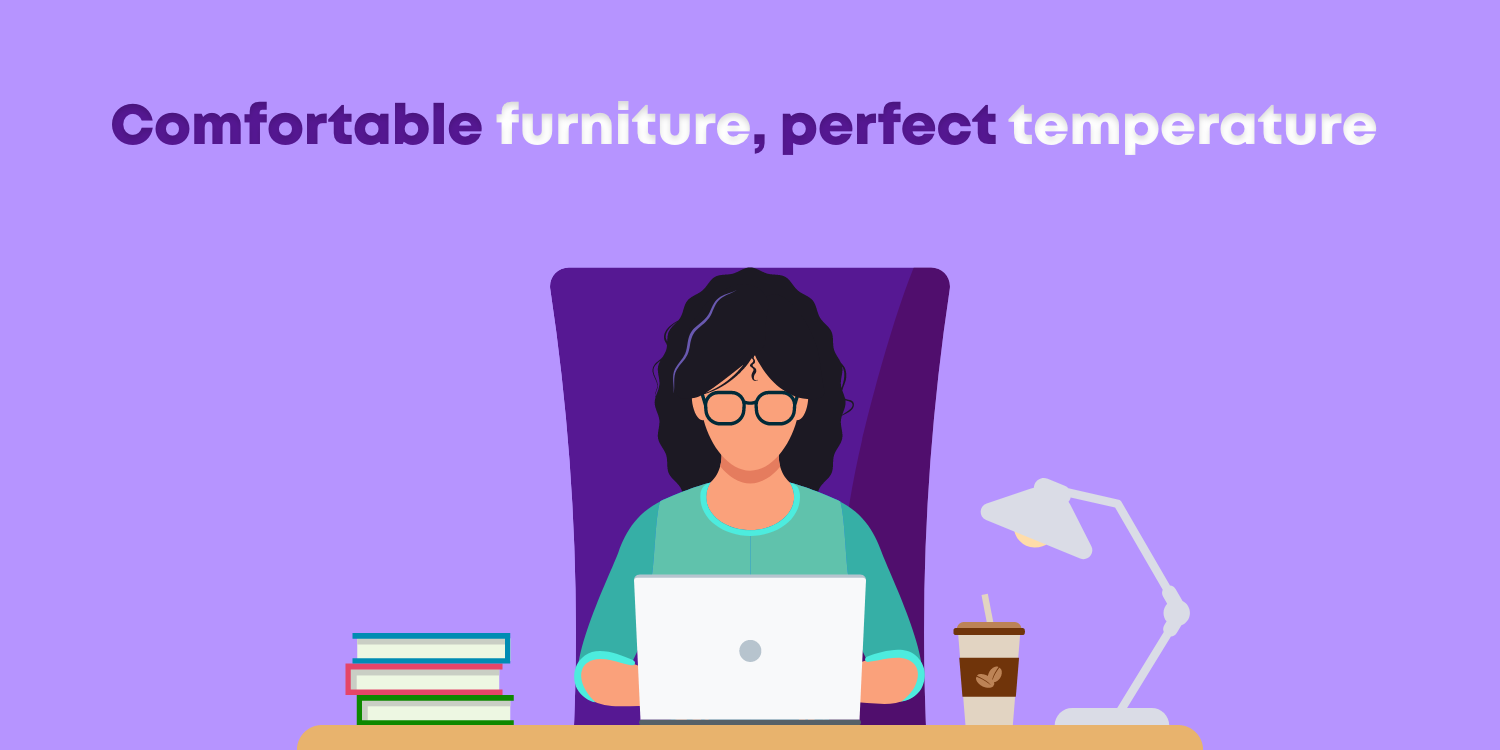
I got cold while writing this blog. I kept thinking, “you should have brought a jacket!” The goosebumps on my arms and legs were nagging me to find something to snuggle up in. Right here is an example of a distraction. How could I eliminate this? Well, I could bring a coat next or ask the manager to readjust the thermostat. Maybe I could get a warm drink.
Another thing to keep in mind if you’re doing work at your desk is that you need a supportive chair. I couldn’t imagine working all day in a chair that makes my back ache. A lousy quality chair will result in fidgeting and frustration (trust me, I’ve been there.) The texture is another thing to consider. Have you ever sat on those scratchy seats that make your legs itch or leaned against a splintery wooden table or desk? Smooth surfaces and quality fabrics can go a long way when making a workspace inviting.
Smell: it smells in here, have the bins been taken out?
Our sense of smell is something we shouldn’t overlook in terms of distraction. Pleasant or foul smells can affect our productivity as much as anything else. An unpleasant odour can be highly distracting. We instinctively recoil away from anything gross that tickles at our noses.

Have the bins been taken out? Is there something rotten in the communal fridge? Is there anything at all that makes you want to clamp a peg on your nose? Well, chuck whatever it is out and replace these smells with pleasant scents. Maybe a candle or some incense? Perhaps opening the window to let the fresh air fill the space. Our sense of smell is arguably one of the more powerful senses, as the “olfactory bulb is part of the limbic system, the emotional and memory centre of the brain.” A foul smell can be as revolting as a bad taste, and people will want to avoid it. A clean, nicely scented workplace is an engaging workplace!
Taste: I’m starving and I can’t focus
You may be curious how taste can factor into optimised workspace productivity. Food is our fuel, like literal fuel to a car. Our bodies and brain need nourishment to succeed. Going for a walk and grabbing a tasty and healthy bite to eat can make all the difference in a worker’s attitude. Even though the taste is a minor sensory factor to consider, a delicious lunch or yummy coffee is highly satisfying and can change your mood for the afternoon. It’s bizarre, but I have always found that a bad tasting meal can often affect my mood. “Food has a direct impact on our cognitive performance, which is why a poor decision at lunch can derail an entire afternoon.“
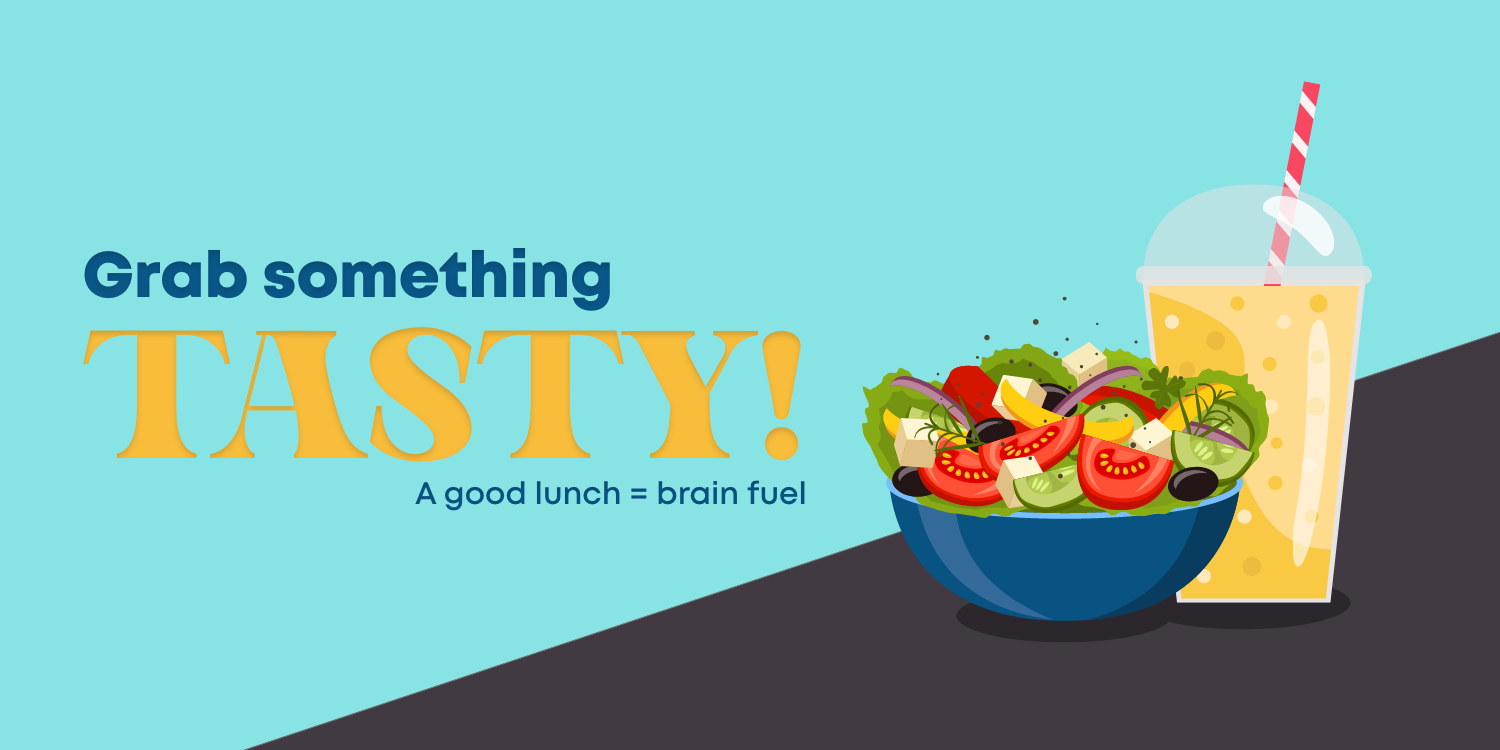
Now that we are on the topic of food, it is vital to note that tastiness isn’t always enough. The food needs to be healthy and energy stimulating. I found a few ideas I’d like to share with you.
- Avocado
- Tuna
- Brown rice
- Melons
- Eggs
- Nuts
- Smoothies
- Yoghurt
- Fruit salad
All of the foods above can constitute as a tasty treat and a healthy meal. It has also been found that over-indulging on carbohydrates can cause fatigue, which may be useful to keep in mind. It has also been suggested that too much yummy coffee can be counterproductive. A caffeine crash is never fun and unbelievably exhausting. Although the alluring taste of coffee is tempting, monitoring caffeine intake is essential to be productive.
Voila! Your optimised productive workspace
Using the five senses as a guide to an optimised work environment ensures that the employees are comfortable, which = efficiency! An optimised workspace is more than arranging some desks. Hard work comes from the employee and their moods. We cannot function uncomfortably five days a week. Everything we feel, taste, see, hear, and smell fluctuates our attitudes and motivation. Rearranging a workspace to appease the five senses should make a definite difference!

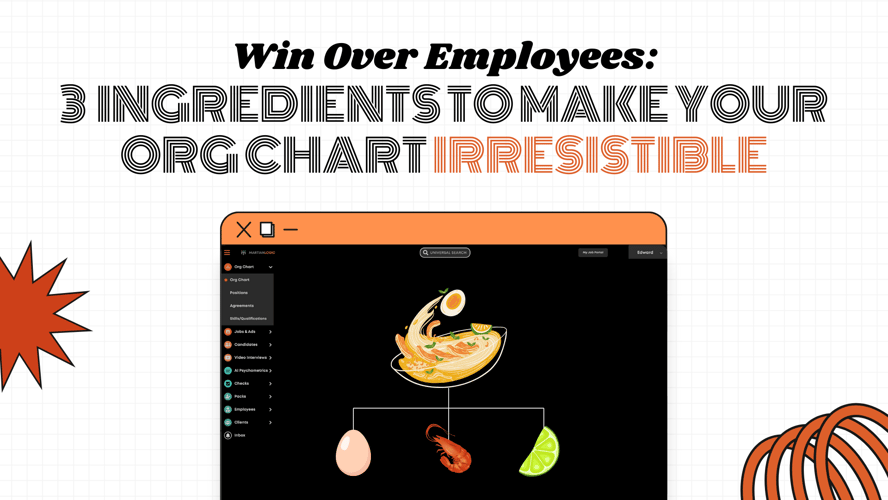

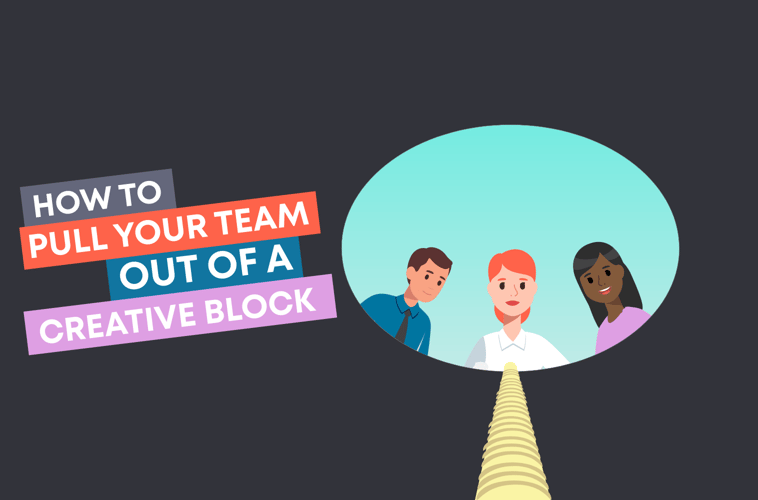
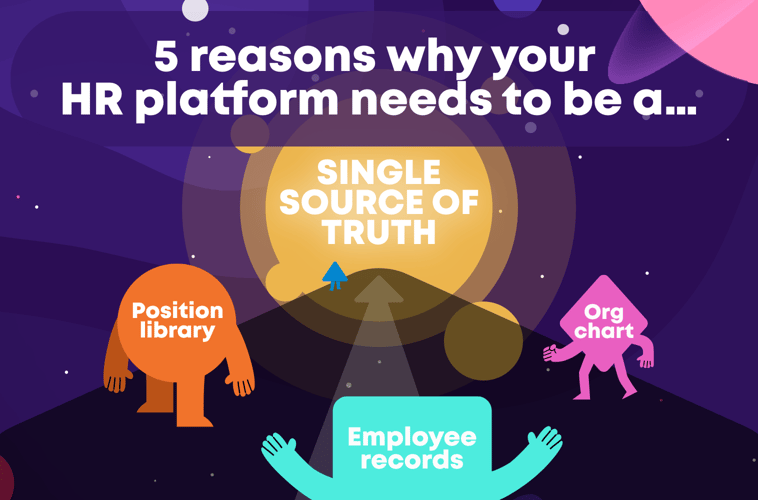
Blog comments